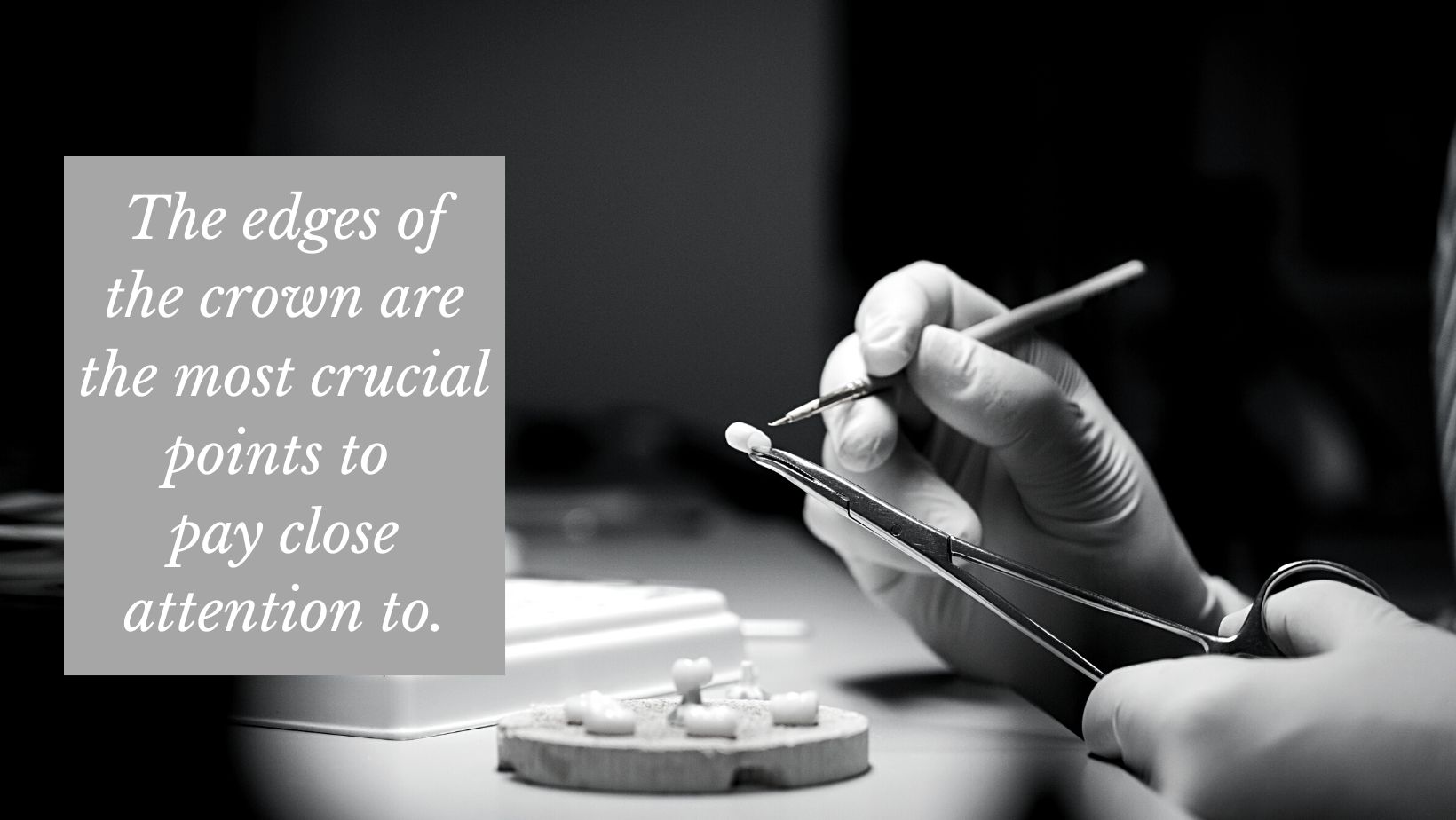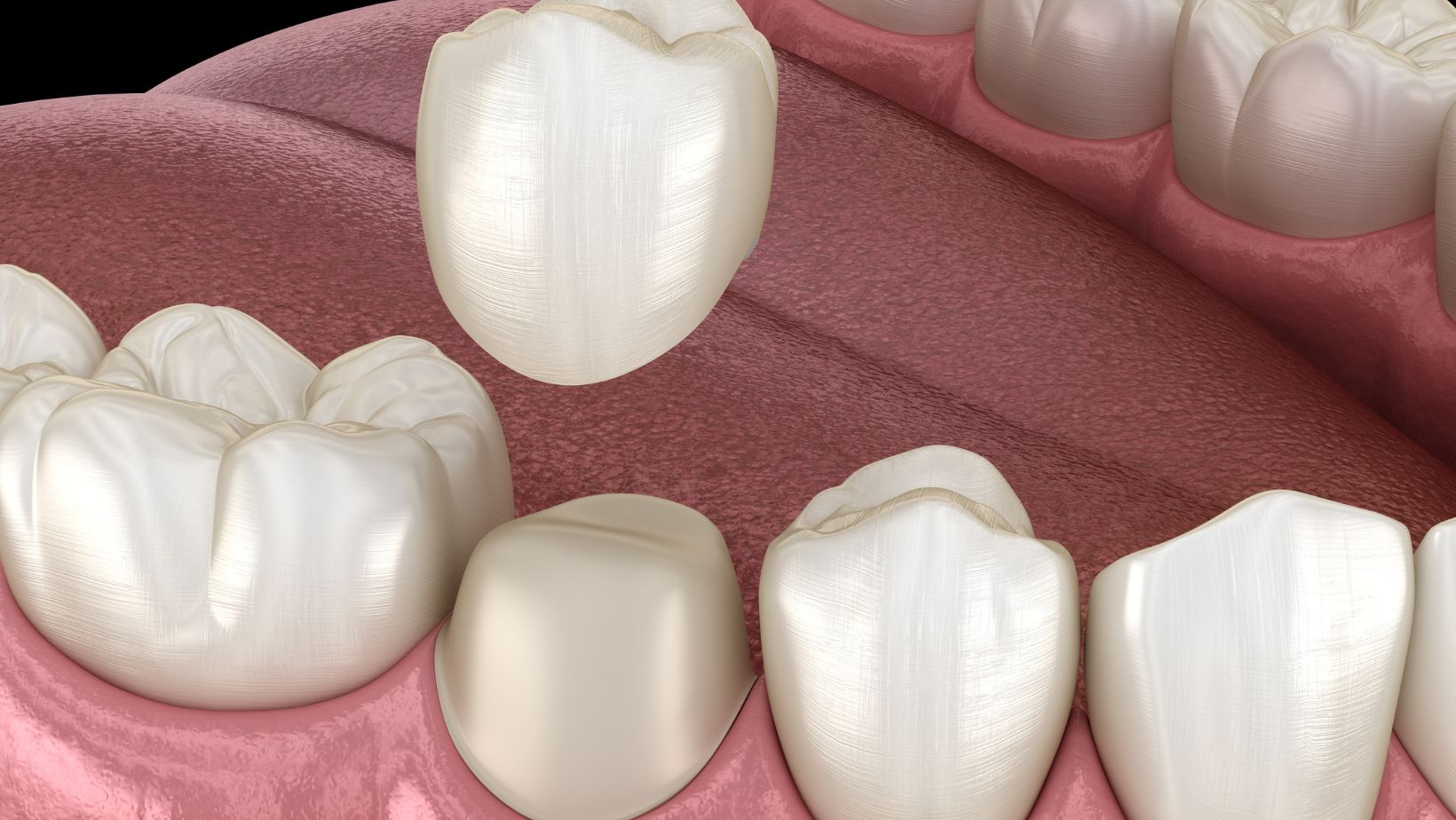Crowns are common after a root canal procedure. And people might assume a crown has totally fixed their infected tooth. But, what many do not realize is that sometimes it is possible to get decay under a dental crown. This can happen if all of the infected tissue was not taken out of the root, or if the crown was not placed correctly, allowing bacteria to cause decay.
If decay gets under a crown, it might need to be replaced. There are signs to watch for that might mean a crown has been compromised and needs a dentist’s attention.
What is a Crown and Why is it Needed?
A dental crown is a cap for a tooth. It provides protection by tightly sealing off a damaged tooth from decay. Crowns are necessary after a root canal procedure or when a tooth has a very large cavity. The structure of the tooth is weakened by removing the infected tissue. The crown looks and feels like a normal tooth, allowing the patient to chew normally, while acting as a barrier from further damage.
Symptoms of Tooth Decay Under a Crown
There are several noticeable signs when tooth decay occurs under a dental crown.
- The Crown is sensitive. Sometimes, simply brushing a sensitive tooth can be a painful experience and this sensitivity is likely caused by decay. If a tooth with a crown is causing discomfort, it is a good time to get to the dentist for a checkup.
- Crown pulling away from the tooth. When a tooth is breaking down underneath a crown, creating too much space in between. This means there is nothing binding the crown to the tooth and the dental work could break or fall off as a result.
- Tooth is starting to look discolored. A change in color does not always indicate decay but it is a possible sign. When areas around a crown show dark staining it could be a sign a tooth is decaying.
- Toothache in tooth with crown. A toothache occurs when decay presses against a nerve. This can cause mild discomfort when biting down and can become more intense as the cavity grows over time.
- Pain when eating certain foods. Chewing with a decaying tooth is a painful experience. Some foods can exacerbate this feeling like really hot or cold foods, and sugary foods. When these foods cause a pain in a crowned tooth, it could mean it is decaying underneath.
- Food and floss getting stuck between crown and tooth. Cavities create space between the tooth and the crown. Food will easily get trapped in this space and cause further decay. When cleaning teeth, floss catch between the tooth and the crown as well. A crown will be tightly sealed to the tooth when it is healthy, so if there is a space forming then there is a problem.
Prevent Decay Under a Crown
The edges of the crown are the most crucial points to pay close attention to. Where the crown attaches to the tooth is the most vulnerable area for food particles to sneak in and cause decay. To preserve the life of a dental crown brushing and flossing diligently is important and regular dental checkups are crucial. Dental cleaning tools to get into small nooks and crannies can be helpful in making a crown last for longer periods of time.
Some dental aids can keep crowns healthy so they can last longer.
- Electric toothbrushes do all the work and spin in a circular motion, cleaning crowns and teeth thoroughly.
- Floss gets between teeth where brushing can’t, preventing the starting point of decay.
- Tooth scrapers can get into hard to reach places and are more aggressive than floss for plaque removal.
- A dental mirror can be helpful to bring plaque, food particles, and discoloration to light.
At home dental tools are useful for everyday maintenance, but when decay is suspected, it is best to have a dental professional assess the problem and fix it. We recommend twice yearly dental visits. If problems arise between visits, contact the dentist right away.

Fixing Decay Under a Dental Crown
A filling or crown itself cannot develop a cavity, but the tooth under it still can. When decay is present it can spread quickly and cause serious damage to the crown, what is left of the tooth beneath, and even the surrounding teeth. When decay goes untreated it can cause more cavities to develop, and even the loss of bone mass in the jaw. In the worst cases, the patient might lose the tooth. There are a handful of treatment options for taking care of a decaying tooth no matter how mild or severe the deterioration is.
Replacement Crown.
When too much tooth rot is present the crown will not seal the tooth properly anymore. Best case scenario for a crown to stay on is up to 15 years with regular checkups and maintanance. Crowns can break or fall off when cavities occur because of the space between the crown and the tooth. A new crown will need to be put on in this case, it needs to bind tightly to the tooth to do its job properly.
Root Canal Therapy.
If decay has gotten deep down into the tooth nerve, the recommended treatment is usually a root canal procedure If decay is bad enough under an existing crown, the procedure will need to be redone and the crown replaced.
Crown Lengthening.
Crown lengthening provides more surface area for the crown to bind to by reshaping the gums to expose more of the tooth. This dental surgery also removes any decay that is beginning to form along the side of a tooth. Once this decay is cleared out a new crown will be put on top of the tooth.
Don’t Ignore Decay Under a Dental Crown
A well maintained crown should last for at least 15 years or so. Most people do not have any problems but if decay goes untreated a small issue can turn into something really serious. So, take good care of a crown and watch for any changes. At the first sign that something is wrong get to the dentist.
If you need to find a dentist for your crown, use our online search tool to make an appointment with one in your area.


